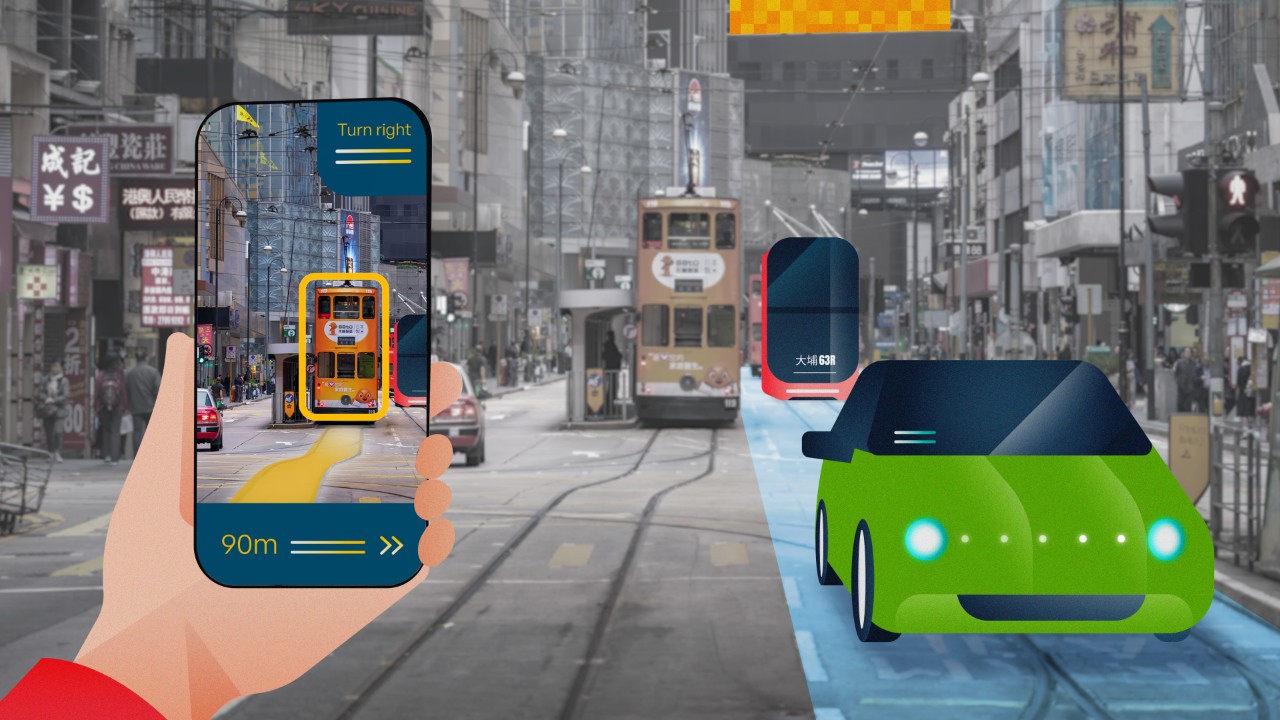Electric vehicles and bicycles can make urban mobility more sustainable, but they aren’t a complete solution. Cities need broader and greener transportation ecosystems that include mass transit, ride-hailing, and other options alongside EVs and bikes. And they need to tie those services together with connective tissue: integrated apps.
The opportunity is there for the taking. Mobility services like bike and e-scooter sharing, EV charging, and ride-hailing will grow twice as fast this decade as the overall mobility sector, according to new research from the Oliver Wyman Forum and the Institute of Transportation Studies at the University of California, Berkeley.
Apps hold the key to consumer acceptance by enabling riders to reserve and pay for these blossoming mobility modes. These apps are becoming more integrated with each other, putting a full suite of options at consumers’ fingertips. That will drive demand and potentially lower costs. In Asia, for instance, popular super apps provide an all-in-one platform for ride-hailing, food deliveries, or chatting with friends.
Our research projects that 13 leading mobility services will grow at a rate of almost 10% a year through 2030, expanding the market to $660 billion in 2030 from $260 billion in 2020 across North America, Europe, and Asia.
North America has low population density in many areas, long commutes, and poor public transit, while Asia is the opposite. Yet both regions will see strong growth in car rental and ride-hailing services, albeit for different reasons.
Ride-hailing, North America's largest sector, is poised for continued growth as leading players are electrifying their fleets and investing in robot taxis. That could make ride-hails even more convenient, affordable, and attractive to travelers.
Car rentals, which accounted for 34% of North American consumer spending on mobility services in 2020, look set to more than double this decade. It’s a popular option for vacationers and may get a growth boost from a societal shift away from car ownership.
But the biggest winner in North America’s car-centric culture will be smart parking payment services. Revenues are expected to leap thirty-fold this decade, to $21 billion in 2030.
In Asia, car rentals and ride hails are growing in part because of the difficulties and expense of owning a car. China has a low ratio of car ownership to driving licenses due to restrictions on registrations while Japan has costly insurance rates for younger drivers compared with other markets. Rapid urbanization and industrialization in India and China mean less parking, making it more inconvenient to own a car.
Asia also boasts a strong bicycling culture that is set to boom even further, particularly in China. Demand for affordable mobility that beats traffic and avoids public transportation has grown. Bike-sharing players face less red tape than in Europe and North America, and new players are entering the market after some of China’s biggest providers shut down in 2020 amid intense competition.
As for Europe, call it lightning in a bottle: Consumer demand and regulation are converging to make the continent the leading and fastest-growing market for EV charging services. Consumer EV sales accelerated between 2020 and 2021, while the European Union proposed a ban on new fossil fuel car sales by 2035. The number of EVs on the road is forecast to increase 41% a year this decade, and charging networks will follow suit: Charging service revenues are forecast to jump to $5.8 billion in 2030 from $200 million in 2020.
These changes will contribute to the fight against climate change provided the electricity source is clean. Yet e-scooters and electric ride-hails will unfold their true potential only if integrated into a holistic mobility offering that includes mass transit.
The Challenge to Cities
Subways, buses, and light rail are by far the most efficient and sustainable modes of travel, but COVID-19 has depressed ridership as people eschew large crowds. If the pandemic shift from mass transit to personal cars and ride-hailing persists, that could deprive transit systems of revenue and aggravate congestion — a trend already observed in several cities. Emissions also could rise if these new services rely on internal combustion engines.
Cities will need to find a balance between encouraging new solutions and bolstering mass transit.
Brussels aims to do just that. The Belgian capital in 2020 approved a decade-long plan to reduce the number of cars on the road to cut congestion and promote sustainability. The city is redesigning roads to create more room for pedestrians, cyclists, and public transit, and using technology to give citizens a wider breadth of options. Brussels is developing a single digital platform to access all mobility services and constructing hubs where someone can transfer from a train or bus to a shared bike for the last mile of their trip, or charge their e-scooter.
That’s an alluring vision. To turn it into reality, mobility executives, policymakers, and investors will need to work together to make new mobility’s growth less disruptive and a net positive for society.
Most forms of micromobility – whether it’s pedaling a bike, riding an e-scooter, or simply walking – require a physical activity that other modes of transit lack. That’s music to the ears of this emerging consumer group. Wellness Protagonists are embracing digital tools to do everything from tracking calories burned to seeing a therapist via telehealth.
These consumers are defined not by chiseled physiques or healthy incomes but by diversity. Wellness Protagonists are driving demand to fitness products, mental health services, nutrient-fortified groceries, and smartphone apps that sync everything together. Organizations that provide holistic and personalized health solutions will capture the attention of this community and their market potential.
Who Is a Wellness Protagonist?
These consumers account for 21% of the global population, according to a study by the Oliver Wyman Forum that surveyed more than 125,000 people in 10 countries. They’re typically urban millennial women with low to middle incomes.
Digital lies at the center of the Wellness Protagonist’s holistic approach to health. As gyms shut down during the pandemic, new virtual approaches to fitness proliferated, including telling consumers how they could do weight work at home by lifting gallon water jugs. This cohort also embraced telehealth; they’re 10 times more likely than the general population to use a mental well-being app.
At least one-third of Protagonists measure and monitor all aspects of their well-being, such as caloric intake or how much sleep they get each night, with many saying it keeps them motivated. They want even more tailored, detailed insights, with 58% willing to share their data in exchange.
Why They Matter
Wellness Protagonists are pioneering new opportunities that go beyond groceries and fitness equipment. They’re hurdling into smart clothing and nootropics (supplements that claim to improve cognitive performance). Seventy-one percent have tried at least one avant-garde concept like utilizing blood tests to create an optimized diet, compared with just a third of the general population. If it has the potential to enhance their well-being, Wellness Protagonists will be first in line.
The Protagonists could have an even bigger impact in driving healthcare toward a more digitized, data sharing model. That could enable practitioners to substantially improve quality of care, with benefits for everyone.


